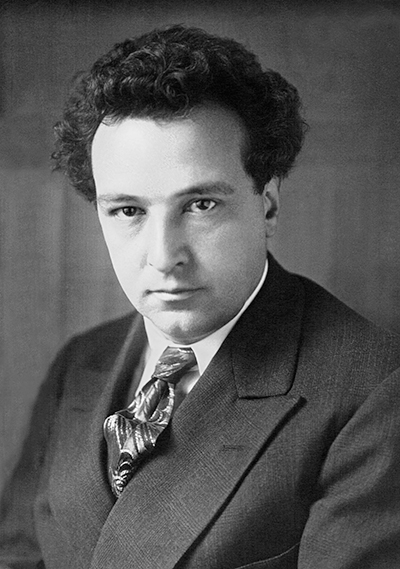Arthur Honegger

Born: March 10, 1892, Le Havre, France
Died: ANovember 27, 1955, Paris, France
Pastorale d'été
- Composed: 1920
- Premiere: February 17, 1921 in Paris, Vladimir Golschmann conducting.
- CSO Notable Performances:
- First & Most Recent: April 1966, Max Rudolf conducting
- Instrumentation: flute, oboe, clarinet, bassoon, horn, strings
- Duration: approx. 8 minutes
Arthur Honegger was born in Le Havre, France of Swiss parents, and maintained a strong allegiance to (and the citizenship of) Switzerland throughout his life. He studied for two years at the Zurich Conservatory before transferring to the Paris Conservatoire, where his teachers included André Gédalge, Charles-Marie Widor and Vincent d’Indy. Honegger’s first important work, a violin sonata, appeared in 1918, at about the time he was arbitrarily inducted by a French journalist into the group of composers known as “The French Six,” whose other members included Francis Poulenc, Darius Milhaud and three lesser-known figures. Although Honegger was respectful of these musicians and supportive of the vibrant musical activity they brought to Paris, his sympathies were as heavily weighted toward the traditions of Germany as to those of France, and he drifted away from “Les Six” in the 1920s. Of his artistic philosophy, he wrote, “I attach great importance to musical architecture, which I should never want to see sacrificed for reasons of literary or pictorial order. My model is Bach…. I do not seek, as do certain anti-impressionists, the return to harmonic simplicity. I find, on the contrary, that we should use the harmonic materials created by the school which preceded us, but in a different way—as the base of lines and rhythms.”
Honegger’s oratorio King David (1921) and the “Symphonic Movement” Pacific 231 (1923), which evokes the speed and power of a locomotive, brought him international prominence, and he toured widely in Europe and the Americas for the last three decades of his life as lecturer, conductor and pianist. His large output comprises 30 stage works, including operas, oratorios, ballets and vaudevilles; a vast quantity of incidental music and film scores; five symphonies; many independent orchestral compositions; scores for chorus and orchestra; chamber music and songs. Of Honegger’s musical style, critic Henry Prunières wrote, “In him…the best qualities of French and German schools meet and blend. Simple melodies, with natural inflections, develop one from another. Each instrument in his chamber music, and each group of instruments in his orchestral scores, seems to have its individual life, and speaks its own language.”
The lovely Pastorale d'été (“Summer Pastorale”) is one of Honegger’s earliest orchestral creations and still bears traces of the impressionist influence that slipped from his work in later compositions. He composed the Pastorale during a vacation in August 1920 amid the breathtaking beauty of Wengen, in the shadow of the Jungfrau near Interlaken, and it bears the unmistakable imprint of a halcyon Swiss summer. The score was headed with a quotation from Rimbaud’s Les Illuminations: J’ai embrassé l’aube d’été (“I embraced the summer dawn”). The Pastorale d'été has been among the most-frequently heard of Honegger’s orchestral works since its premiere under the direction of Vladimir Golschmann in the Salle Gaveau in Paris on February 17, 1921, when it was awarded the Prix Verley by unanimous audience acclaim. The work opens with a sylvan horn theme presented over a rocking accompaniment of sleek, languid harmonies in the strings. This lovely motive is taken over by the oboe and then by the strings, which develop it into a smoothly contoured, wide-ranging melody. The second section of the piece, initiated with a folksy tune from the clarinet, is lively and dance-like in character. The opening music and flickering reminiscences of the dance theme combine to form the closing chapter of the work.
—Dr. Richard E. Rodda